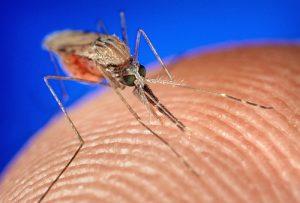
GAINESVILLE, Florida –A new study out of the University of Florida calls for caution in estimating the impact of mosquito control on malaria and other vector-borne disease transmission. Public health officials make prevention and treatment decisions based on models of the impact of interventions. For vector-borne diseases like malaria, these models are based on mosquito lifespan and the changing transmissibility of disease, as they age. The assumptions are often based on laboratory studies, which do not necessarily represent life in the wild – but how bad is that?
The study, published in the Ecological Society of America’s journal Ecosphere, explores how current models of the life history of Anopheles mosquitoes, the most important vector of malaria in sub-Saharan Africa, don’t always track with real world observations of mosquito mortality. The current models overestimate the average lifespan of Anopheles, and do not account for the shape of mortality in older individuals. These assumptions can lead to inflated estimates of malaria transmissibility.
The primary means of reducing malaria transmission entails preventing infected mosquitoes from biting people. This is currently accomplished by intervention strategies like spraying for mosquitoes, and sleeping under bednets.
“I think the key message is don’t overestimate the impact of the intervention by using the wrong mortality assumption; it’s bad business for public health.”, says the study’s lead author, Dr. Sadie Ryan, Assistant Professor of Medical Geography at the University of Florida. “If we want to prevent the spread of mosquito-transmitted diseases, public health officials need appropriate predictive models validated with real data.”
The collaborative research team includes experts in epidemiology, public health, ecology, entomology, mathematical modeling, and geography: lead author Sadie Ryan (University of Florida), co-author Tal Ben-Horin (Rutgers), and co-author Leah Johnson (University of South Florida). The work expands upon the team’s prior work at the National Center for Ecological Analysis and Synthesis at the University of California, Santa Barbara.